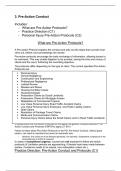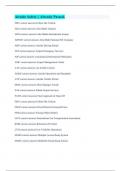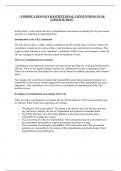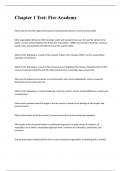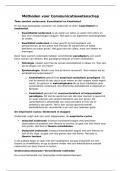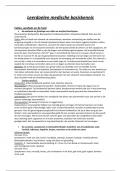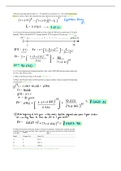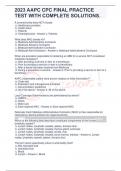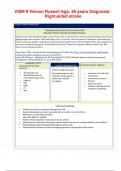Includes:
- What are Pre-Action Protocols?
- Practice Direction (C1)
- Personal Injury Pre-Action Protocols (C2)
What are Pre-Action Protocols?
A Pre-action Protocol explains the conduct and sets out the steps that counsel must
carry out, before court proceedings are issued
Pre-action protocols encourage the early exchange of information, allowing issues to
be narrowed. This may enable litigation to be avoided, saving the time and money of
clients and the court; furthering the overriding objective.
The protocols differ depending on the type of claim. The current specified Pre-Action
Protocols are:
Personal Injury
Clinical Negligence
Construction and Engineering
Professional Negligence
Judicial Review
Disease and Illness
Housing Condition Cases
Housing Disrepair
Possession Claims by Social Landlords
Possession Claims for Mortgage Arrears
Dilapidation of Commercial Property
Low Value Personal Injury Road Traffic Accident Claims
Low Value Personal Injury Employers’ and Public Liability Claims
Debt Claims
Resolution of Package Travel Claims
Media and Communication Claims
Personal Injury Claims below the Small Claims Limit in Road Traffic Accidents
In areas where the Pre-Action Protocols do not apply, the generic Practice Direction: Pre-
Action Conduct and Protocols (PDPCPs) apply (C1-001)
Failure to follow either Pre-Action Protocols or the PD: Pre-Action Conduct, without good
reason, can result in sanctions but never an automatic loss.
- However, the codes are to be followed generally, not slavishly. Substantive compliance in the
circumstances is all that is required.
In cases of exceptional urgency, counsel are not expected to follow pre-action
protocols (if Limitation periods are approaching, if threats have been made between
parties, if evidence needs to be seized, non-molestation orders etc.).
Practice Direction: Pre-Action Conduct and Protocols (C1)
, C1-001 The PDPCPs explain the conduct and set out the steps the court would
normally expects parties to take before commencing proceedings.
C1-002 The objectives of the Pre-Action Conduct and Protocols are to ensure parties
have exchanged enough information to::
(a) Understand each other’s position;
(b) Make decisions about how to proceed;
(c) Try to settle the issues without proceedings;
(d) Consider a form of ADR to assist with settlement;
(e) Support efficient management of those proceedings; and
(f) Reduce the costs of resolving the dispute.
C100-3 PDPCPs should not the used tactically and the costs incurred in in
complying should be proportionate (this extends to all PAPs).
In order to comply with the objectives, the parties should exchange
correspondence and information, the steps are:
a) The claimant should write to the defendant with concise details of the claim.
o The letter should include the basis on which the claim is made, a summary of the facts,
what the claimant wants from the defendant (if money, how much);
b) The defendant should then respond within reasonable time: 14 days in a straight
forward case and no more than 3 months in a very complex one.
o The reply should include confirmation as to whether the claim is accepted or, if it is
not accepted , the reasons why, along with an explanation as to which facts of the
claim are disputed and whether the defendant is making a counter claim (and the
details of this);
c) The parties should disclose key documents relevant to the issues in dispute.
C1-005 If parties intend to rely on expert evidence, the court must give permission
first.
- If the use of an expert is necessary, parties should consider the use of a
single expert, jointly instructed.
C1-0006 Litigation should be a last resort. Part 36 offers to settle may be made
before proceedings are issued.
As part of the PAPCPs, the parties should consider the use of ADR throughout the
process, processes such as:
a) Mediation;
b) Arbitration;
c) Early neutral evaluation; or
d) Ombudsmen schemes.
If proceedings are issued, parties may be required to evidence of their consideration
to use ADR.

